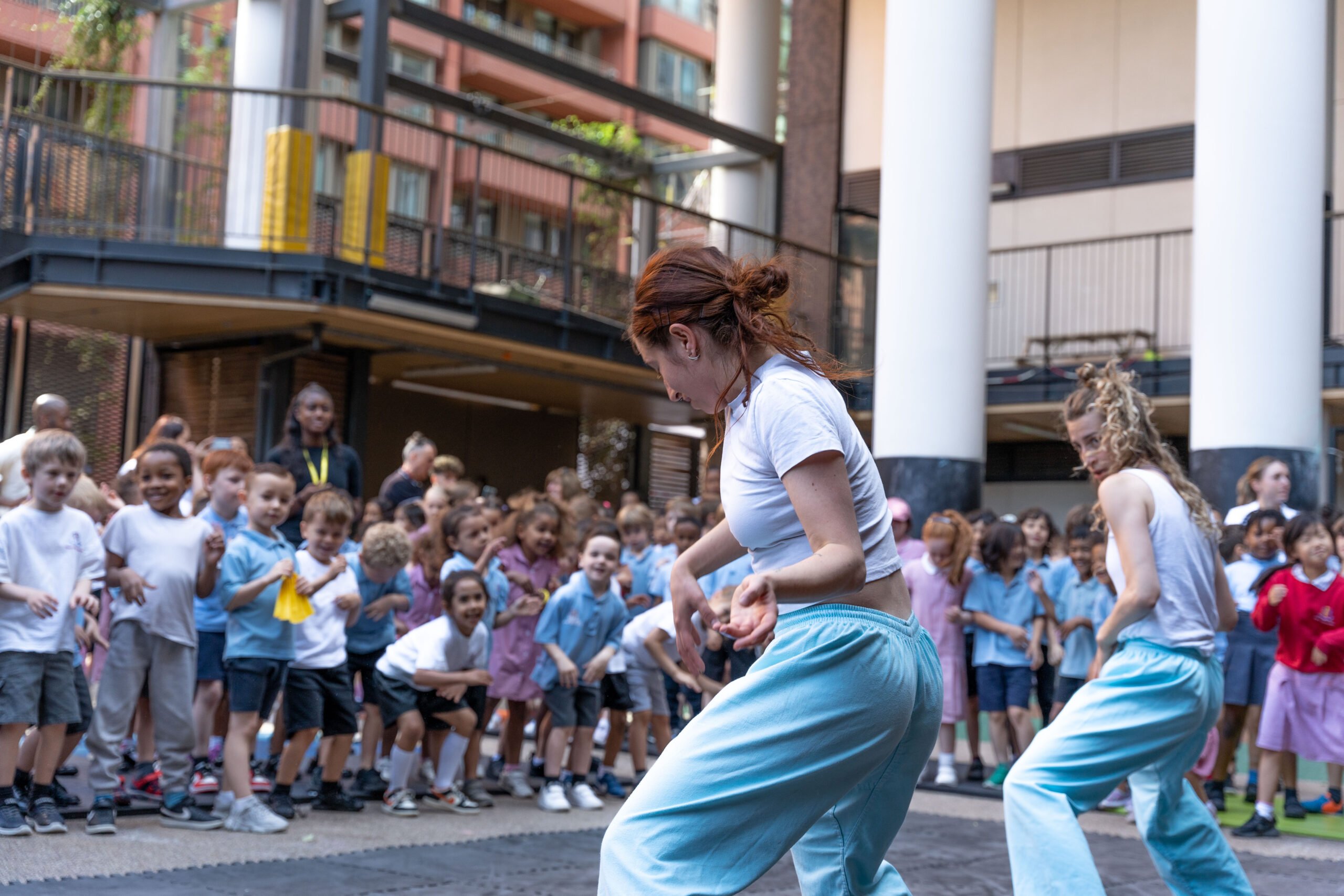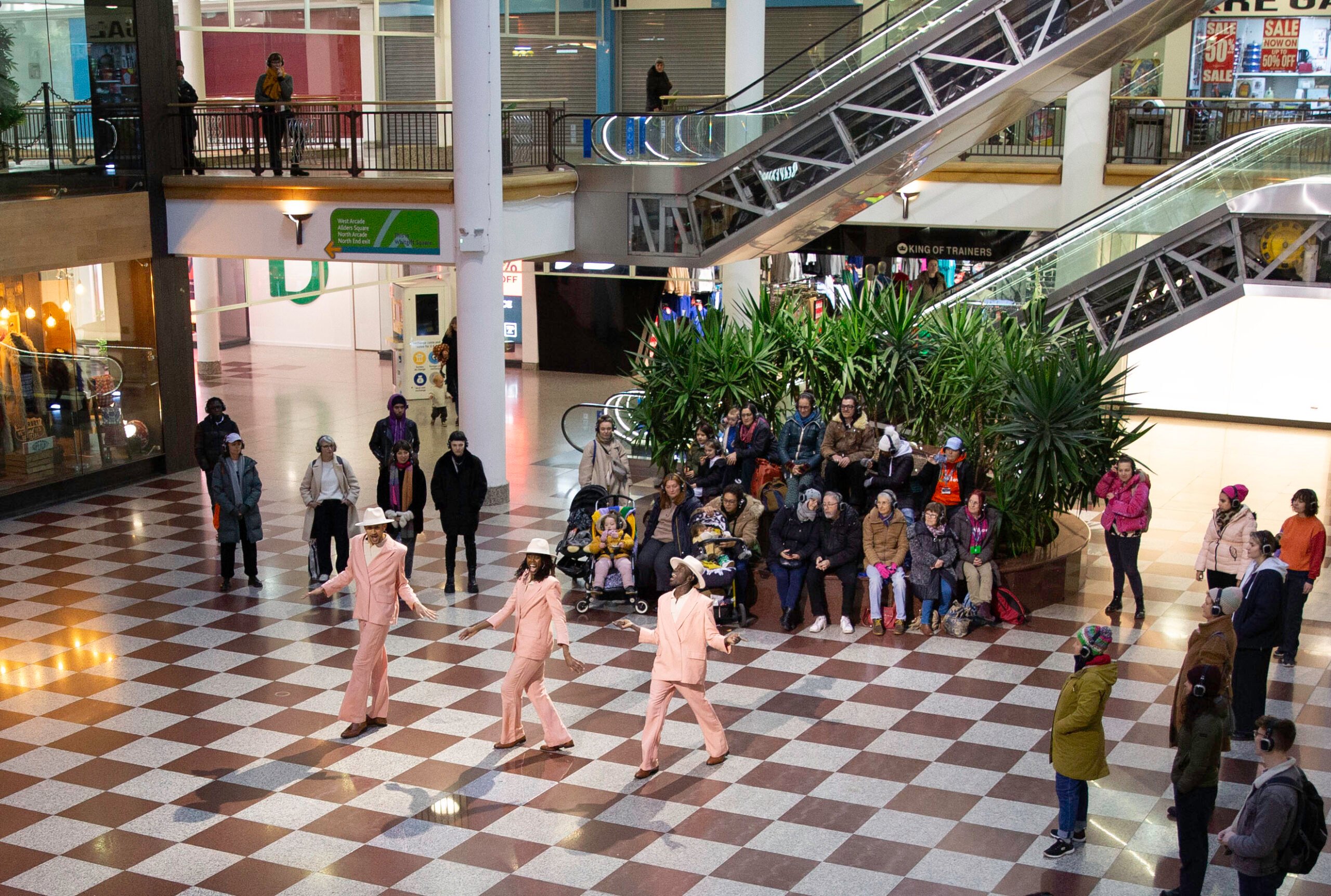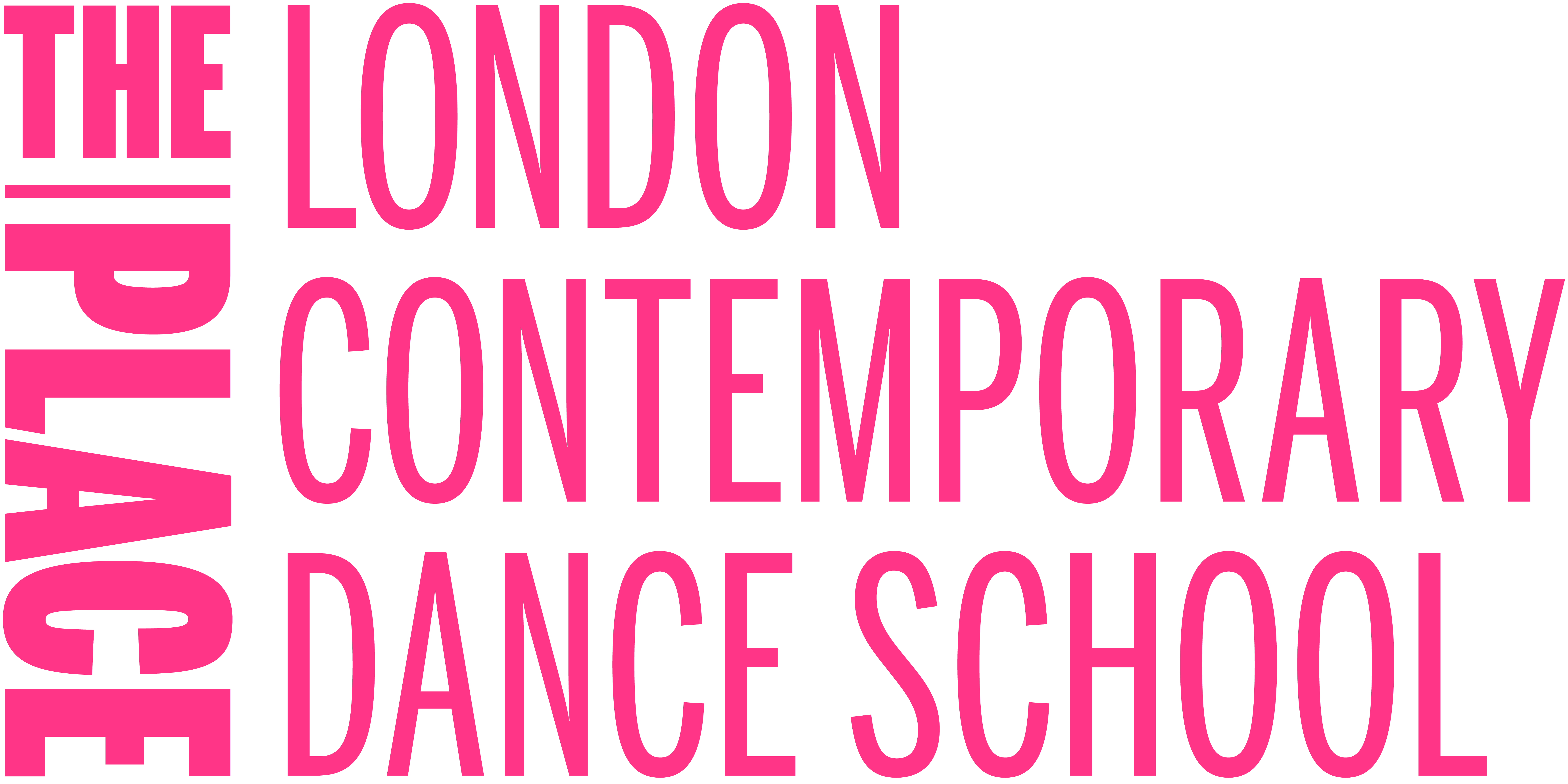
Playground tour by The Place, a dance and performance centre and home to London Contemporary Dance School
Photo: Henry Curtis Photography
Producing dance: Hanging on, building back, reimagining?
As a small subsector of the performing arts, dance faces unprecedented challenges. Through his dance network, choreographer and academic Christopher Bannerman is planning a sector survey to assess the current state of the artform.
When we began the Future Ecologies: Producing Dance Network*, we began a journey into uncharted territory. Very little has been written about dance producers and their significance in the ecosystem, despite their vital role in providing a pipeline of creativity, in ensuring new work extends the impact of the artform, and in reaching new audiences nationally and internationally.
The dance sector – and its ecosystem – had been buffeted by an unprecedented convergence of Brexit, Covid, acute concerns regarding diversity, social justice and climate change, political and economic instability, and war. Envisioning a new future for producing dance through an ecological perspective seemed vital so we formed a group of universities and arts partners to take this on over an 18-month period, funded by the Arts and Humanities Research Council.
Data reflecting the rapidly evolving context was scarce and the facts and figures that might allow us to see the current state of the artform and the emerging trends were extremely limited, making a meaningful assessment difficult.
Now we need your help
We are preparing a sector survey, asking those involved in producing dance about what is happening now. How confident are you about the future? Are you focused on hanging on until things improve? Will we build back better, or do we need to completely reimagine the way our sector operates to create a new and different future?
As a network of six universities and seven arts partners, including One Dance UK and the National Centre for Academic and Cultural Exchange, we have an abundance of expertise, but the uncertainties the arts in general – and dance in particular – face makes assessment, analysis and prediction challenging.
As we started work, the closures and curtailments of university dance courses accelerated with more than 10 closures in recent years and the university sector as a whole faced severe cuts to both posts and provision.
Resilience, creativity and adaptability
The arts sector too faced difficulties and, as we worked with arts partners, we learned from each encounter. The resilience and adaptability of artists associated with Yorkshire Dance was humbling and inspiring, with both the organisation and the individual artists reshaping their practices in the face of extreme uncertainty and precarity.
But it was a shock when Birmingham and Nottingham City Councils withdrew support for arts and culture just before a session with our partner FABRIC and colleagues from the Birmingham Dance Network. The producers faced fundamental – almost existential – challenges.
Similarly, a two-day event at Royal Conservatoire of Scotland and The Work Room in Glasgow inspired and challenged us to consider the needs of ‘Crip’ artists, whose role and voice is growing stronger just as the dance infrastructure is shaking. The event followed soon after Creative Scotland’s unprecedented decision to end the Open Fund giving notice just two weeks before the final deadline.
That fund was the lifeblood for so many independent artists, including more than 250 who were associated with The Work Room. Inevitably those two weeks were filled with frenetic application writing and rethinking the future. In the end, the Scottish government found the resources to continue the Open Fund, but the instability and precarity these events reveal point towards a future of ‘survive at all costs’ in the hope that better days lie over the horizon.
Shock to sector would overshadow successes
But what does that future hold for those involved in producing dance? We have seen examples of resilience, creativity and adaptability of both artists and producers. A strong sense of community remains, bolstered by a depth and breadth of knowledge and expertise across generations of artists and arts professionals.
As one of the smallest subsectors in the performing arts, dance has learned to adapt and survive. But its small size also means little room for manoeuvre with continuing cuts. And the tragedy of a severe shock to the sector would overshadow the strong successes dance has had in recent years.
These include the increasing diversity of the artform and its workers; the range of work and its local, national and international audience reach; the way it has been a leading exemplar for global Britain, its energy and openness.
Continues…

A takeover of Croydon’s Whitgift shopping centre: Super Normal Extra Natural by Requardt & Rosenberg. Photo: Camilla Greenwell
While many believe dance will survive, most agree this time feels different and what emerges will be different. The impacts may not emerge immediately. For example, if arts education continues to diminish, people involved in both school and professional dance training provision may predominantly have experienced dance first in the private sector.
While the private sector arguably makes an important contribution to dance experiences and careers, the demographic balance will shift, diversity will diminish and the range of creative voices will narrow.
A tragic act of vandalism
Major arts organisations may weather the current storms but the creative innovation and paradigm-shifting ideas, which are so often incubated in the fertile ground of the independent sector, will diminish and be narrower, less representative and less bold – in short, a shadow of its former self.
This would be a tragic act of vandalism with little gain for the country, for British society or for the impact of British culture internationally. While the danger signals are flashing, there may still be time to set out a productive way forward to ensure the pathways of opportunity remain and dance continues to extend diversity of participation and representation, embodying one of the most vital expressions of the inclusive culture of the UK.
Our sector survey is now in preparation. When it launches, we ask you to please respond, pass on the link and encourage others to respond. While we are eager to hear from those directly involved in producing dance, we know there are others who will also have useful and important observations and experiences to share. We look forward to working together to envision a stronger, more resilient and representative dance sector.
This article, sponsored and contributed by Future Ecologies: Producing Dance Network, is the first in a series of articles exploring the challenges for producing dance and the wider dance ecosystem.
* Future Ecologies: Producing Dance Network is funded by the Arts and Humanities Research Council.


Join the Discussion
You must be logged in to post a comment.